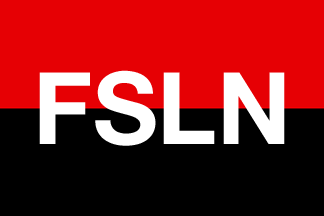|
Matagalpa
Matagalpa () is a city in Nicaragua which is the capital of the department of Matagalpa. The city has a population of 111,258 (2021 estimate), Population of the major cities in Nicaragua while the population of the department is 600,057. Matagalpa is Nicaragua's seventh largest city, the largest in the country's interior, and one of the most commercially active outside of . Matagalpa is the 4th most important city in Nicaragua and is known as the "Pearl of the North" and "Land of Eternal Spring." Origin of the name [...More Info...] [...Related Items...] OR: [Wikipedia] [Google] [Baidu] |
Matagalpa Department
Matagalpa () is a department in central Nicaragua. It covers an area of 6,804 km2 and has a population of 600,057 (2021 est). The capital is the city of Matagalpa with a population of about 111,000. Matagalpa is the second largest region of the country in population size, and the fifth in area (after the North Atlantic, the South Atlantic, Jinotega and Río San Juan). Matagalpa is the most diversified region producing coffee, cattle, milk products, vegetables, wood, gold, flowers. Its extensive forests, rivers and geography are suited for ecotourism. Municipalities # Ciudad Darío # Esquipulas # Matagalpa # Matiguas # Muy Muy Muy Muy is a municipality in the Matagalpa department of Nicaragua. The municipality of Muy Muy was named by the Matagalpa people, who were the indigenous group native to the area. In their native language "''muimui''" translates to "the best" ( ... # Rancho Grande # Río Blanco # San Dionisio # San Isidro # San Ramón # Sébaco # Terr ... [...More Info...] [...Related Items...] OR: [Wikipedia] [Google] [Baidu] |
Cacaopera People
The Cacaopera people also known as the Matagalpa or Ulúa., are an indigenous people in what is now El Salvador and Nicaragua. History The Matagalpa are one of the most important cultures in the historical development of the Nicaraguan territory, but they lack precise information that can legitimize their ethnic origin. Most of the studies carried out on this original group have achieved great advances, but they always remain empty that they do not allow to indicate with certainty said origin. The strongest theory is that which attributes the Matagalpa are of Chibcha origin from South America. Their cultivation of cacao, corn and beans show some Mesoamerican influence. However, historians believe their ceramic style known as "Ceramica Negra" and "Naranja Segovia" show Mayan influence and have been found in abundance in towns near Estelí. According to the archaeologist Edgard Espinosa, Director of the National Museum, the Matagalpa had their highest level of splendor in the nint ... [...More Info...] [...Related Items...] OR: [Wikipedia] [Google] [Baidu] |
Nicaragua
Nicaragua (; ), officially the Republic of Nicaragua (), is the largest country in Central America, bordered by Honduras to the north, the Caribbean to the east, Costa Rica to the south, and the Pacific Ocean to the west. Managua is the country's capital and largest city. , it was estimated to be the second largest city in Central America. Nicaragua's multiethnic population of six million includes people of mestizo, indigenous, European and African heritage. The main language is Spanish. Indigenous tribes on the Mosquito Coast speak their own languages and English. Originally inhabited by various indigenous cultures since ancient times, the region was conquered by the Spanish Empire in the 16th century. Nicaragua gained independence from Spain in 1821. The Mosquito Coast followed a different historical path, being colonized by the English in the 17th century and later coming under British rule. It became an autonomous territory of Nicaragua in 1860 and its northernmost part ... [...More Info...] [...Related Items...] OR: [Wikipedia] [Google] [Baidu] |
Jinotega
Jinotega () (derived from Náhuatl: ''Xiotenko'' ‘place next to the jiñocuajo trees’) is the capital city of the Department of Jinotega in north-central Nicaragua. The city is located in a long valley surrounded by the cool climate and Dariense Isabelia ridge located 142km north of the capital Managua. In 2012, the Department of Jinotega had a total population of 417,372, of which 123,548 lived in the capital city. Of the total population, 50.5% are men and 49.5% are women, and almost 38.4% of the population lives in the urban area. Jinotega produces 80% of Nicaragua's coffee, which is exported to the United States, Russia, Canada and Europe. Within the city of Jinotega are several rivers and a lake. Lake Apanas, an artificial lake of 51 square kilometers, provides hydropower to much of the country. Although there is debate as to the origin of the name, Jinotega is colloquially known as "The City of Mists" (''Ciudad de la Brumas'') for the magnificent whisks of clouds cont ... [...More Info...] [...Related Items...] OR: [Wikipedia] [Google] [Baidu] |
Departments Of Nicaragua
__NOTOC__Nicaragua is a unitary republic, divided for administrative purposes into fifteen departments (Spanish: ) and two autonomous regions (Spanish: ): Autonomous regions In 1987, the new constitution established the Charter of Autonomy (limited self-government) for the former department of Zelaya, comprising the entire eastern half of the country. The department was divided into two autonomous regions (communities): the North Caribbean Coast Autonomous Region and the South Caribbean Coast Autonomous Region. The Charter of Autonomy is largely based on the model used by Spain. The communities are governed by a Governor and a Regional Council. See also * ISO 3166-2:NI Notes * (INETER). . March, 2000. * (INIFOM). . * International Organization for Standardization The International Organization for Standardization (ISO ) is an international standard development organization composed of representatives from the national standards organizations of member countr ... [...More Info...] [...Related Items...] OR: [Wikipedia] [Google] [Baidu] |
